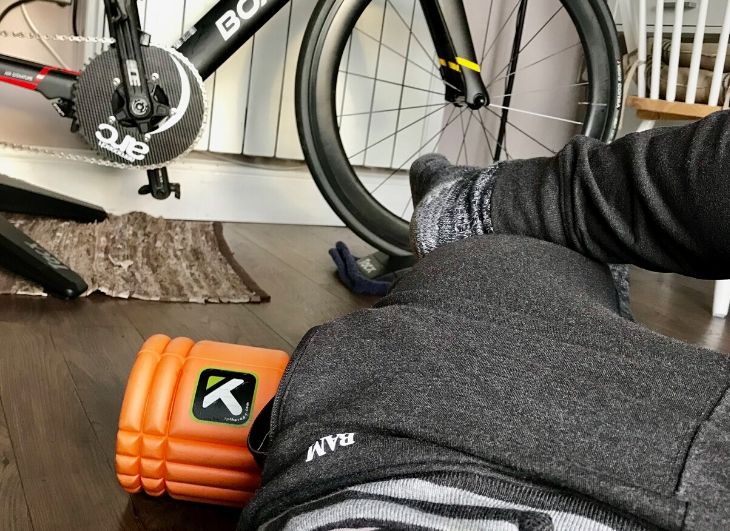What is foam rolling?
Basically it is a form of self-massaging that can be done at your home.
We all know how great your legs feel after a really good message although they can become expensive if you are having them regularly so the foam roller is a great investment to save you time and money in the recovery phase of cycling. It is important to note that it will never be as good as a proper sports message but will compliment them and will help prepare your body for the next training session.
This routine is essential and should be done if possible every day although a minimum of after every ride. Again ideally it’s best to do after you have had your shower and recovery meal although it can be done in the evening while your watching the television just make sure your muscles are not cold.
What do I need?
There are a number of foam rollers on the market ranging in all sizes and shapes resulting in much price difference. An important factor to bear in mind is the size and firmness for your personal needs so if you are slightly larger then it is important that you purchase a firm one that will not collapse. Some models are hollow which means they are great to travel with and also come with varies groves and nobbles which basically mimic the action of a therapist’s fingers. As a general rule the firmer the better when it comes to buying a roller, some of the cheaper models will just flex, degrade and won’t deliver an effective massage.
Along with the roller, you could also use a trigger point ball. This doesn’t need to be expensive and you could even use a hard rubber dog ball or tennis ball
What does it do?
Using a foam roller and a trigger point ball mimics a therapy technique known as myofascial release. The myofascial is a spider’s web-like network of white connective tissue that surrounds all of your muscles. All myofascial are connected and it can almost be thought of as a skin-suit surrounding our muscles. In a healthy state it’s soft, flexible and free moving but repetitive movement, load and trauma can cause it to become tight and unyielding. Traditional passive stretching doesn’t really stretch tissue but only desensitises it to lengthening whereas the compression and release of foam rolling and trigger point ball work is highly effective in maintaining flexible and healthy soft tissues.
How to do it?
– Work up and down the target area for 10 reps at a steady pace. a slow five count up and a slow five count down is about right. Perform 2-4 sets of each movement.
– The ideal time to roll is post-exercise with warm muscles.
– Never roll over bone.
– Initially perform the routine every day but, after approximately two weeks, you can move to the maintenance of every other day.
– Expect it to hurt initially but, after two weeks of daily rolling, the pain will subside.
– Many people, especially women, experience bruising when first starting foam rolling, this is common but seek advice if worried by it.
– Once you’re comfortable with rolling up and down the target area, focus and pause on especially tight or sore spots. Breath deeply and only move on when you feel the tissue relax and the pain subsides.
– If you experience any unusual pain or sensations, consult with a qualified medical professional.







